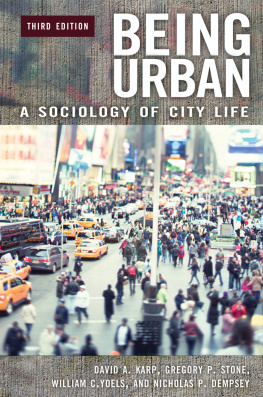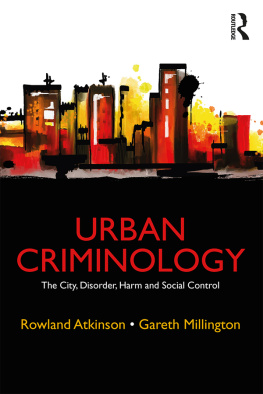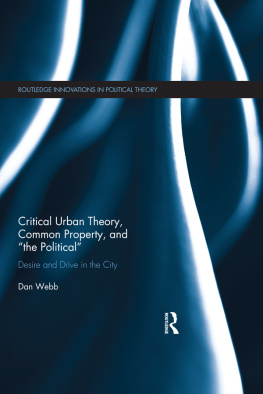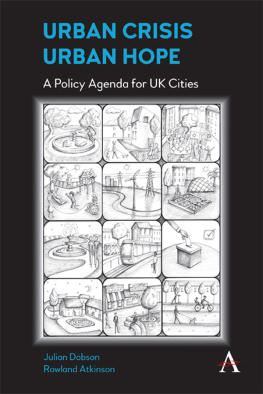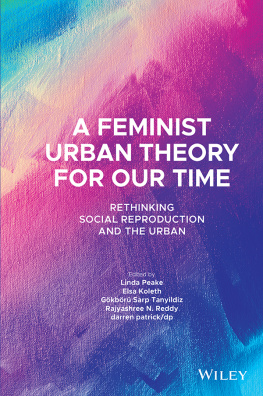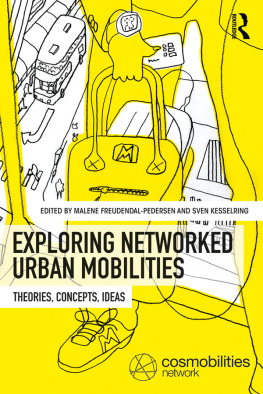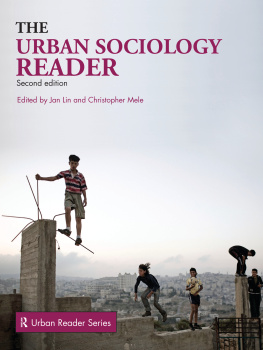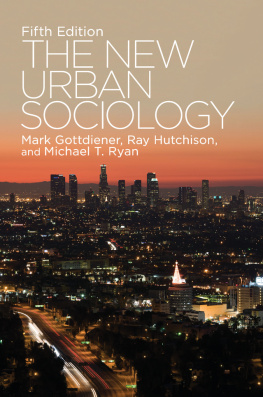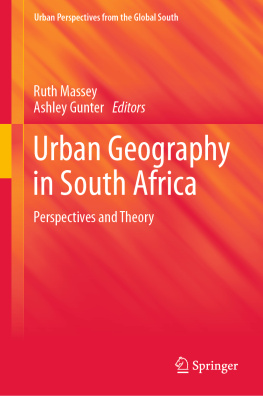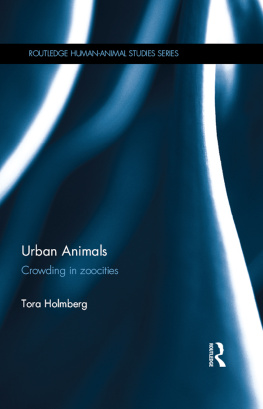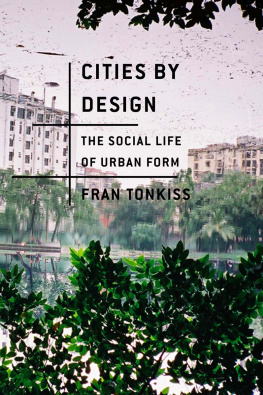Being Urban
A Sociology of City Life, Third Edition
DAVID A. KARP, GREGORY P. STONE,
WILLIAM C. YOELS, AND
NICHOLAS P. DEMPSEY

Copyright 2015 by David A. Karp, Gregory P. Stone, William C. Yoels, and Nicholas P. Dempsey
All rights reserved. No part of this publication may be reproduced, stored in a retrieval system, or transmitted, in any form or by any means, electronic, mechanical, photocopying, recording, or otherwise, except for the inclusion of brief quotations in a review, without prior permission in writing from the publisher.
Library of Congress Cataloging-in-Publication Data
Karp, David A.
Being urban : a sociology of city life / David A. Karp, Gregory P. Stone, William C. Yoels, and Nicholas P. Dempsey. Third edition.
pages cm
Includes bibliographical references and index.
ISBN 9780275956479 (hardcover : alk. paper) ISBN 9780275956547 (pbk. : alk. paper) ISBN 9781440828560 (ebook) 1. City and town lifeUnited States. 2. Sociology, UrbanUnited States. I. Title.
HT123.K372015
307.76dc232015007990
ISBN: 9780275956479 (hardcover)
ISBN: 9780275956547 (paperback)
EISBN: 9781440828560
191817161512345
This book is also available on the World Wide Web as an eBook.
Visit www.abc-clio.com for details.
Praeger
An Imprint of ABC-CLIO, LLC
ABC-CLIO, LLC
130 Cremona Drive, P.O. Box 1911
Santa Barbara, California 93116-1911
This book is printed on acid-free paper 
Manufactured in the United States of America
To my wonderful grandson Yadi Yoels, who lights up my life with his joy and laughter.
W.C.Y.
For the extraordinary joy they provide, I thank Cody, Emily, Jayden, Malia, Sydney, and Tyler.
D.A.K.
To Jack, Bridget, and Angela.
N.P.D.
Contents
Preface to the Third Edition
O ver 20 years have passed since we published the previous edition of Being Urban. In that time, the world has become predominately urbanfor the first time most human beings live in cities. Many U.S. cities have seen their fortunes continue to decline. Others have seen dramatic turnaroundswhere once New York was dirty and crime ridden, and on shaky financial grounds, it is now a global powerhouse with an almost-Disneyland feel in some places. All cities have had to contend in an increasingly globalized world, where economic and political events in faraway places impact the internal dynamics of even isolated cities. Suburbs have grown. The Internet is now available to almost every American, and some commentators have even wondered if cities would be dying out by now (theyre not). Disasters9/11, Katrina, Sandyhave taken huge tolls on cities, and the cities have bounced back.
With so much changing and having changed, one might rightly wonder whether a book like Being Urban, written from the interactionist perspective with roots in the first half of the last century, is still relevant. If cities have changed so much, shouldnt urban life now be of a totally different nature than it used to be? If everybody is reading smart phones on the subway, are they anything like people were in the days of newsprint and payphones? Actually, we believe that people are very much the sameand that the lessons we offer in Being Urban are still very relevant, perhaps now more than ever. Now that were moving back into cities. Now that urbanites are contending in a global economy. Now that our cities are again brimming with immigrants looking to make it big in their new home. Now that we, perhaps ironically, are networked with more people than ever through those smart phones.
In fact, the interactionist paradigm that informs Being Urban is key to understanding much of what goes on in cities, as well as to understanding many of the most important sociological inquiries into urban life that are produced today. Interactionism simply holds that people are conscious of the impressions that they make on others whenever they take an action. Peoples actions are regarded as meaningful and significant by observers. Thus, writes Herbert Blumer, human interaction is mediated by the use of symbols, by interpretation, or by ascertaining the meaning of one anothers actions (Blumer 1969:79). By taking account of how people do this in urban settings, from the smallest scale of people bumping into each other on the street corner, to the larger level of people interacting in neighborhoods, to even larger questions of how politics and economies are coordinated, we stand to learn much about the inner workings of cities.
Of course, this is not to say that the changes that have happened in and to cities are not important. This revised and expanded third edition explores the ways that cities have been changing, and applies the interactionist paradigm to help understand contemporary urban dynamics such as gentrification, globalization, and New Urbanist development plans.
WHATS NEW IN THE THIRD EDITION
For the most part, has added a discussion of Henri Lefebvres contributions to urban sociology, as we have noted that an important thread to studies of cities in recent years owes a great debt to the work of Lefebvre and other Marxist sociologists.
, our discussion of community studies, both describes the rich tradition founded by the Chicago school and explores how that tradition has continued to grow and inform recent studies of neighborhoods and urban community in general. We show how research has demonstrated consistently that people form important connections with one another in cities, and that, indeed, much of the action going on in cities is based in groupsfrom neighborhood organizations to informal groups of street vendors.
In , we delve into the details of everyday interaction in cities. We consider how people make efforts to get along in the citys crowded spaces, and show how life in cities is a remarkable achievement, an intricate interweaving and coordination of diverse peoples activities. Despite the persistence of various negative imagesthat cities are crime ridden, anonymous, and dangerouswe discuss numerous findings that show that people in the city do a remarkable job getting along with, and looking out for, each other. In addition to examining classic studies of interactions in urban space, we discuss how new technologies like smart phones have worked their way into urban dynamics, and how New Urbanist design has been working in recent years to make cities more open to interactions.
Our discussions of tolerance for diversity in both lifestyles and ethnicity in has been augmented to consider how urban dynamics have changed in recent years, with some places more accommodating than ever to diversity, and others acting as last stand islands of intolerance. We also discuss studies that show how some segments of the professional class seek out quirky and diverse neighborhoodsand how that can feed gentrification.
Womens gains in the workplace and politics have been remarkable over the last 25 years, and our discussion of women in cities in goes on to discuss the important contributions women have made in community building and voluntary organizations. We also take note of the troubling persistence of patriarchy in public spaceswomen continue to experience marked levels of sexual harassment in public, not to mention sexual assault. We discuss how this can limit the range of motion of women within the city, but we also discuss how women are working to reclaim public spaces and overcome the culture of harassment.
goes on to explore recent findings regarding a number of problems that plague some citiesincluding the segregation of minority poverty into marginal neighborhoods, rises in single-parent families, and low high school graduation rates.
Next page
